Ride bikes on an abandoned railway line at this hidden tourist spot in Japan
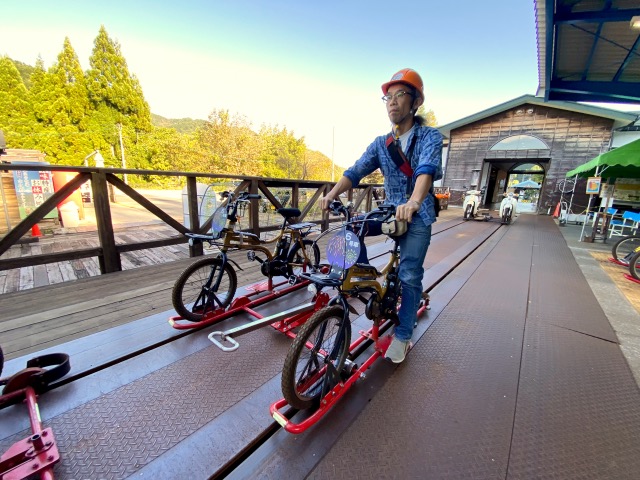
Old railway tracks get a new lease on life in the mountains.
Japan’s network of railway lines is vast, but sadly not all of them are being used, leading them to run the risk of falling into disrepair. The future of these old lines has become a topic of concern around Japan, particularly in rural areas where train services have ceased due to population decline, with the question being: What will become of the railway tracks where these lines have been discontinued?
Well, over in a mountain town called Okuhida in Gifu Prefecture, Kamioka Railway’s Kamioka Line, which was discontinued in 2004, has received a new lease on life as a “rail mountain bike” attraction known as “Gattan Go!!”
▼ This attraction allows visitors to ride a mountain bike along the abandoned railway, while enjoying amazing mountain views along the way.
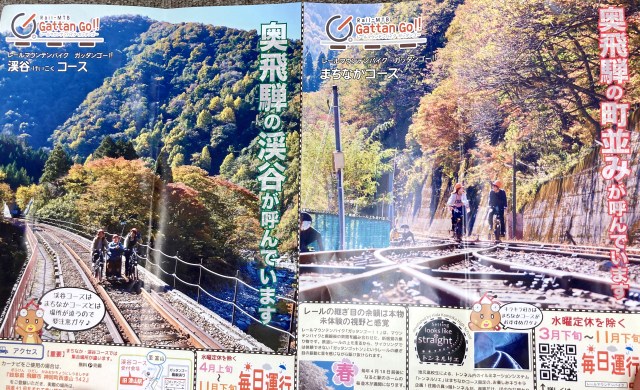
The Kamioka Railway Line was initially constructed for the purpose of transporting ore from the Kamioka Mine. However, when the operators of the mine switched to trucks for freight transport in 2004 as a cost-saving measure, the line was abandoned two years later.
In 2007, local volunteers then came up with the idea for Gattan Go!! as a way to utilise the remaining railway line, and in 2012 the NPO Kamioka Town Development Network took over operations. It’s now open year-round, excluding winter when the attraction is closed due to snowfall.
There are currently two courses at Gattan Go!!– one is the “Machinaka Course“, which runs along a valley and crosses an iron bridge and the other is the “Valley Course“, which is said to be slightly more challenging and 600 metres (0.4 miles) longer than the Machinaka, which is around six-kilometres return.
Our reporter Mr Sato and his boss Yoshio were in the area recently so they stopped by to check it out, opting for the Machinaka course, which was recommended for beginners.
▼ The timetable for the ride on the day of their visit.
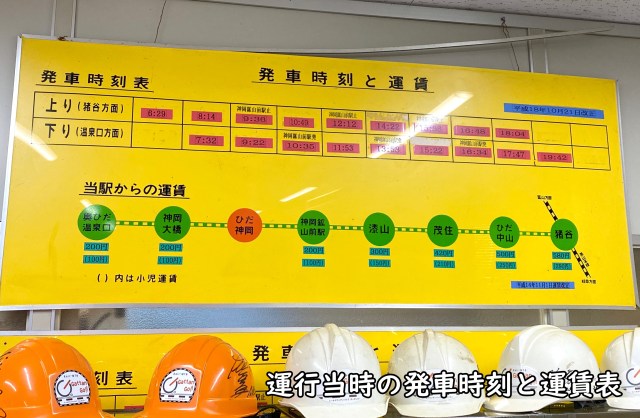
A couple of things to note when visiting is that payment is only in cash, and the reception locations for the two courses are different. Also, to participate in the experience, you must make a reservation in advance, either by phone or online, and arrive at the appropriate reception desk at least 20 minutes before the start time.
For the Machinaka Course, Yoshio and Mr Sato needed to make their way to the Kyuu Okuhida Onsen-guchi Station, where they paid the required fee (3,200 yen [US$21.46] for two people and one bike), filled out the consent form, and stopped by the briefing room for further instructions.

Our duo were participating in the 3:30 p.m. session on a weekday so they thought they might be the only ones there, but there were a number of other participants, making them think that weekends here must be busy.
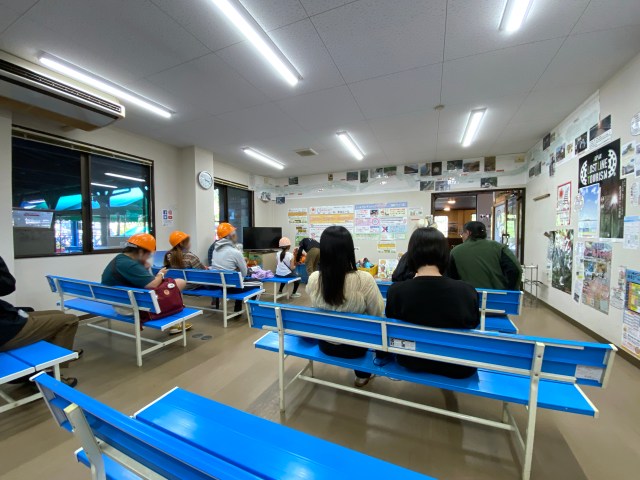
According to the safety rules on the pamphlet they were given, cyclists must ride each 2.9-kilometre (1.8-mile) one-way journey without stopping, keeping a distance of approximately 50 metres (164 feet) from the bicycle in front of them.
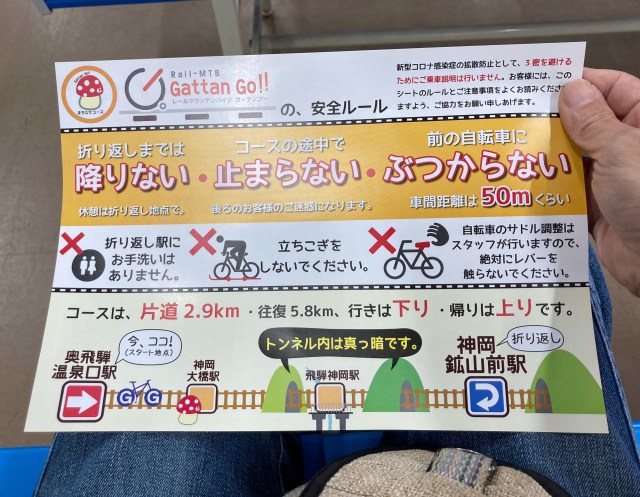
In addition, on the back of the pamphlet, there were guidelines for what to do if you lose something during the trip. According to these notes, it will be almost impossible to find the thing you’ve dropped and you should not stand on your feet or brake suddenly, as safe driving is paramount.
▼ After reading these notes carefully, you’ll then receive a quick briefing from staff.
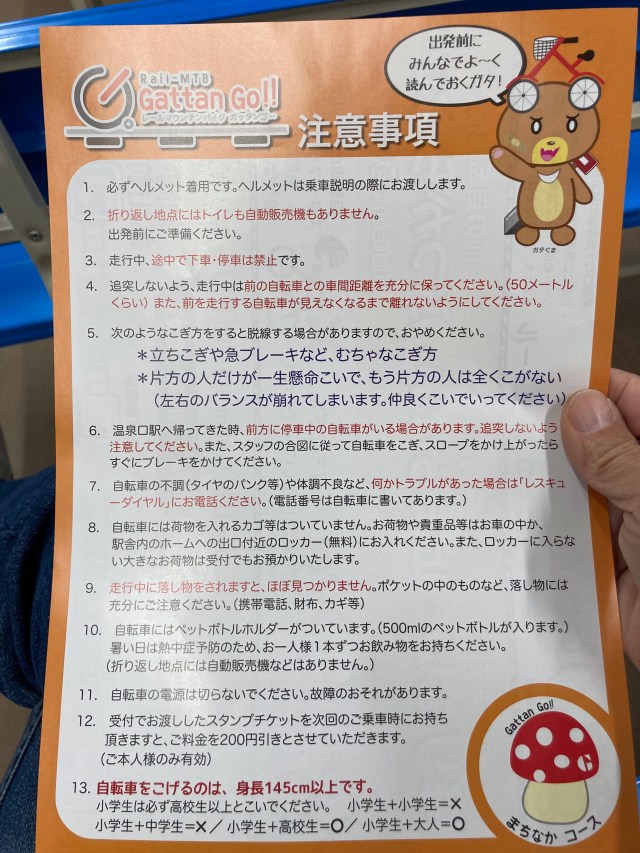
Following the briefing, participants were shown to the starting area, and our reporters were relieved to have fine weather on the day they visited. Though it was still daylight it felt a little chilly in this mountainous environment, so it’s best to bring a jacket or light sweater when visiting. Yoshio, who had arrived in a light short-sleeve T-shirt, shorts, and sandals, was shivering by the time he finished the ride so it’s best to come prepared for a slight chill at this time of year.
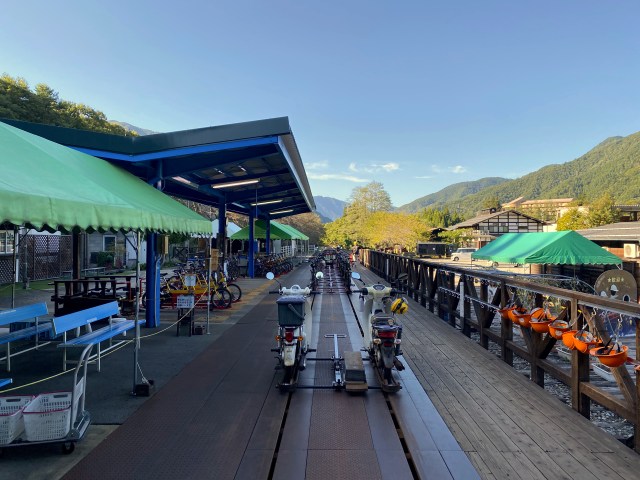
After hopping on the connected bicycles, staff checked each bicycle’s electric assist function to confirm there were no problems, and then they were ready to ride.
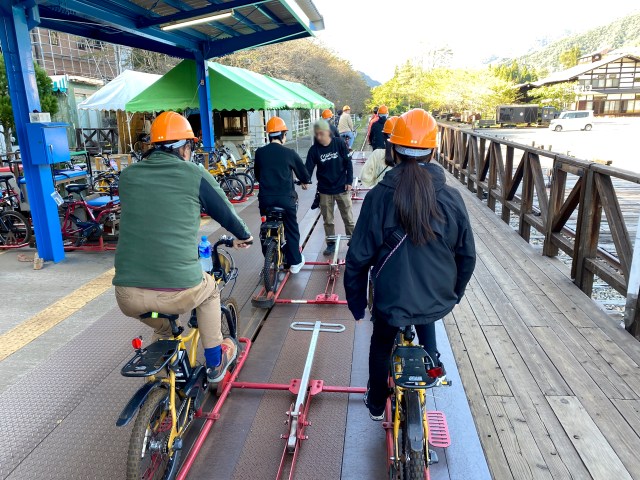
Yoshio and Mr Sato were on car number 6, the last car, to use the term commonly applied to train carriages.
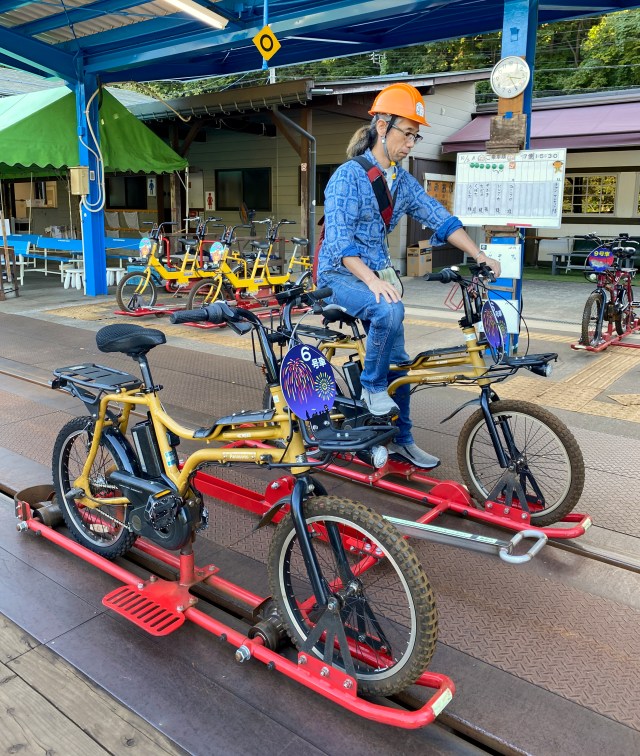
Both our reporters couldn’t suppress their smiles as they felt giddy with excitement at the prospect of what lay ahead of them.

Pedalling together, the bikes proceeded smoothly along the track at a much faster pace than expected. This first part of the route is downhill, so you can pick up speed easily without having to pedal.
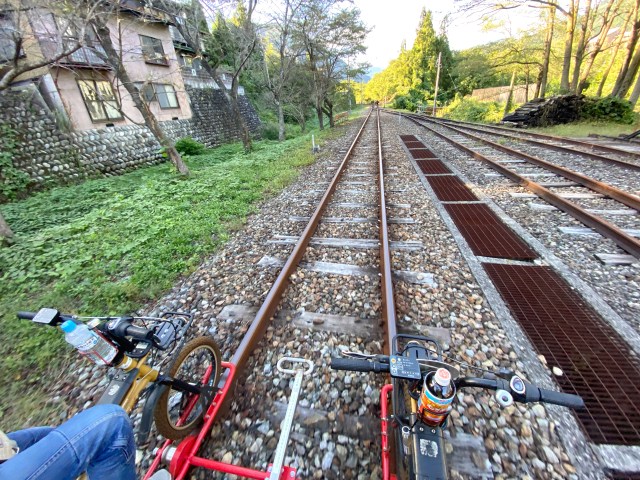
Since there’s almost no need to operate anything on the handle bars other than the brakes, you can easily take photos with your smartphone. Don’t forget, though, if you drop something while riding you might not be able to retrieve it, so be careful not to get too absorbed in taking pictures.
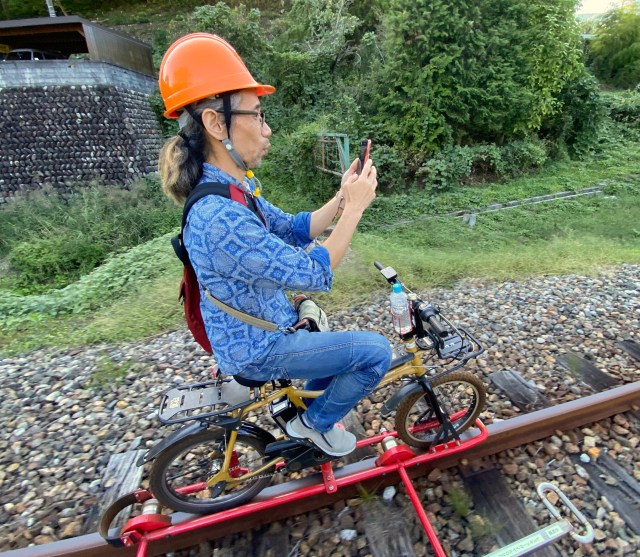
As they pedalled along the track, our city slickers breathed in the country air and enjoyed a sense of freedom that you just don’t get while travelling in a car.
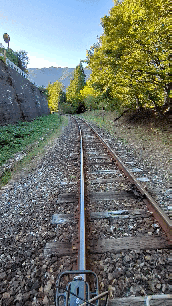
There was even a tunnel section, where it was pitch black inside!

This dark stretch of track made our reporters feel a little on edge, but they needn’t have worried because…
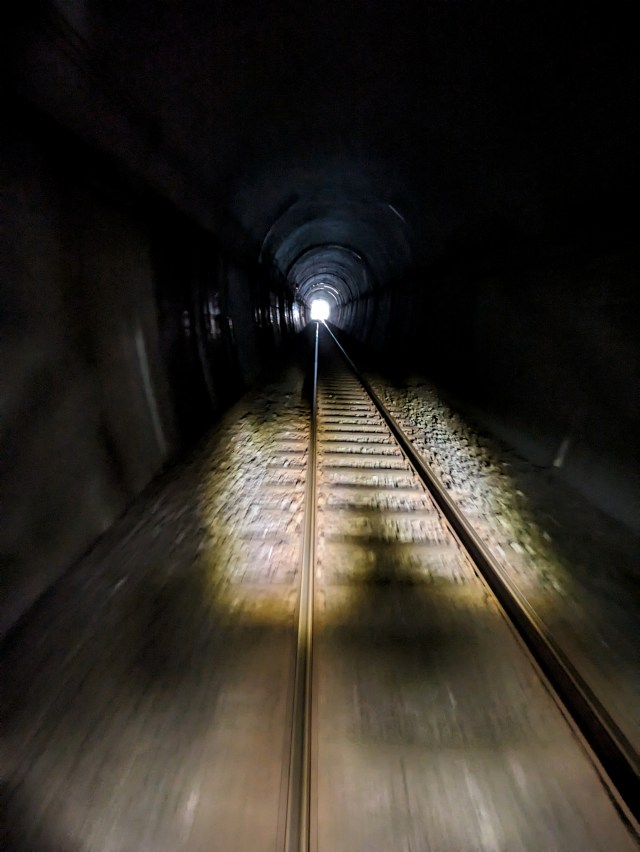
▼ … the track is illuminated!
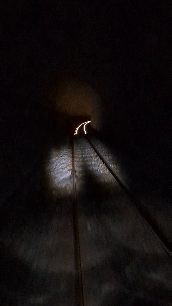
After exiting the tunnel, the route became even more scenic as they crossed a bridge with beautiful views over the rooftops of the town.
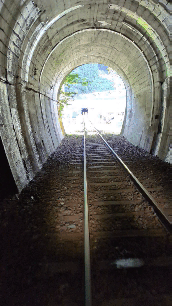
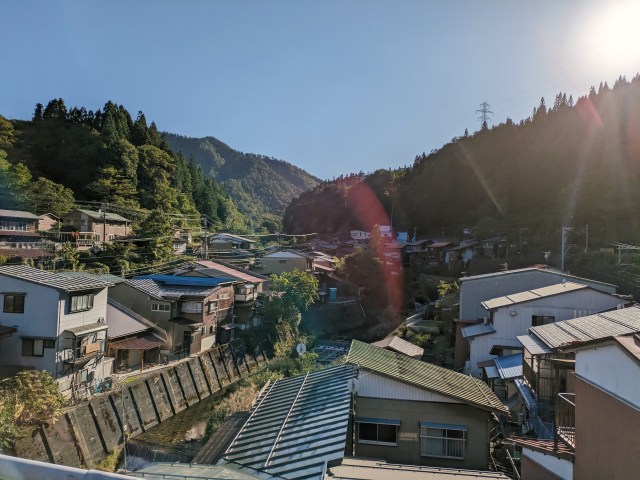
▼ A one-minute clip of the trip
They then passed by one of the old stations on the line…
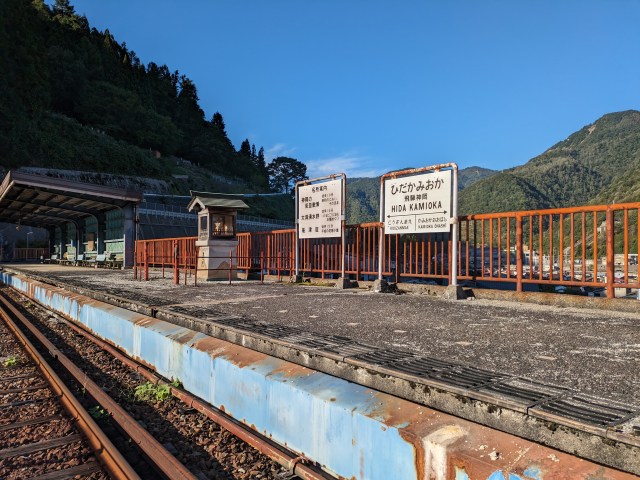
…before arriving at Kouzanmae Station, the turning point for the trip, where they were able to take a short break.
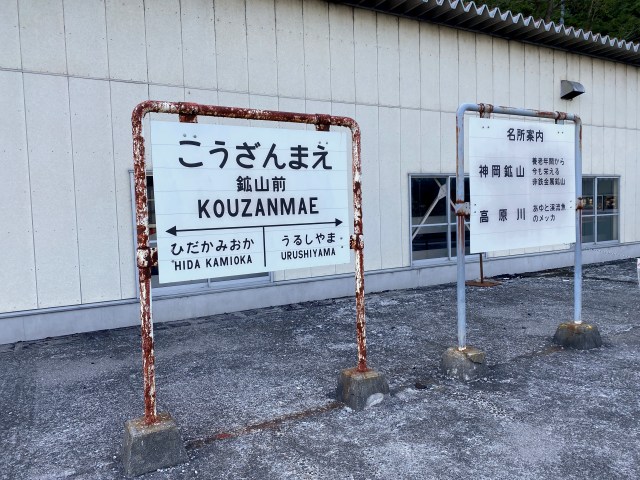
You can freely walk around the tracks here, so everyone in the group took commemorative photos, including our reporters.

▼ “Hai, cheese! Yay!!”
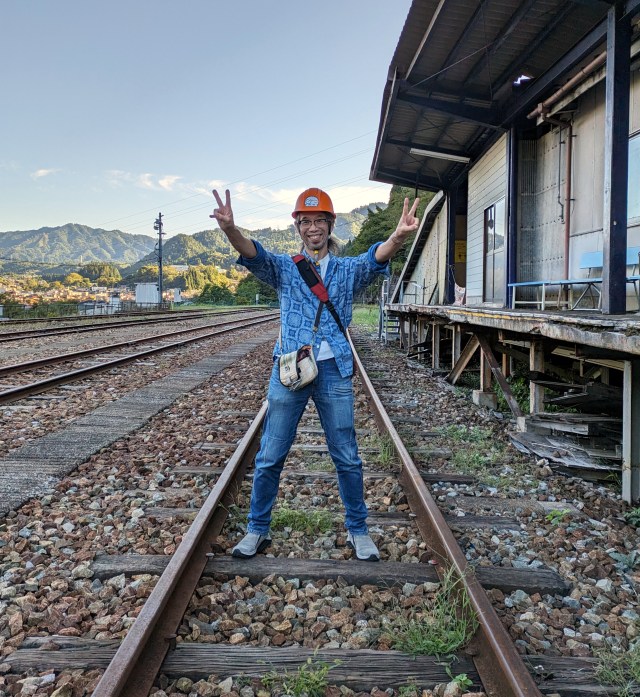
▼ “Hai, cheese! Dosukoi sumo pose!”
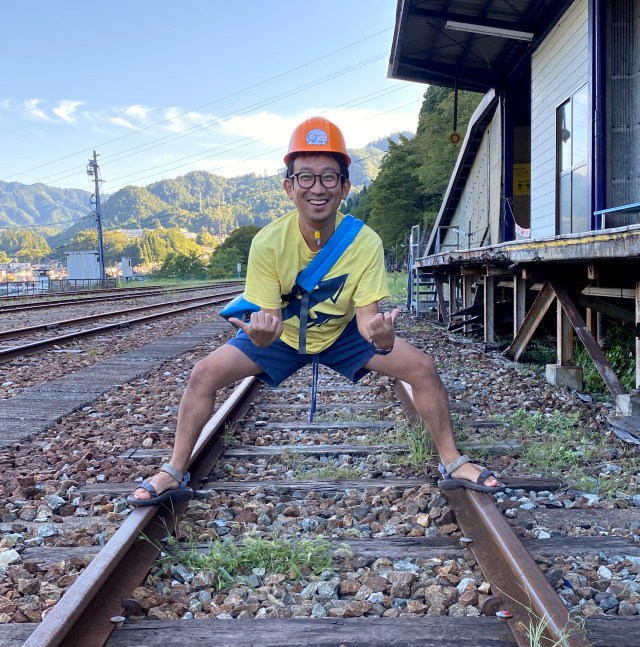
Though Yoshio and Mr Sato were on two similar-looking bicycles, they also noticed other types were available, like this one that can carry one person on a bike and one in a sidecar.
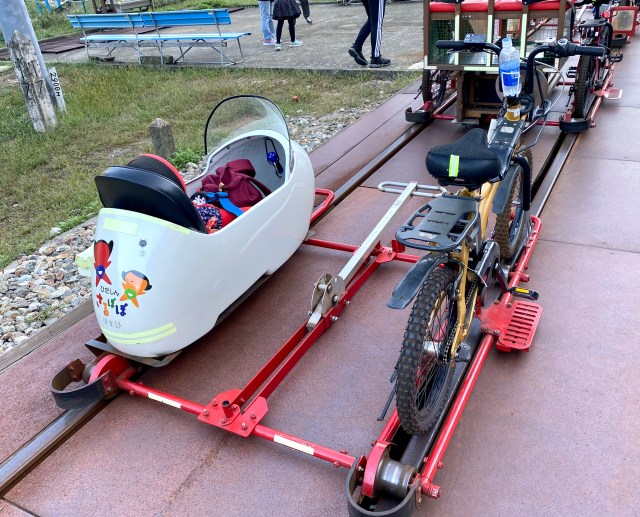
There was even a 4-5 seater version with double decker-style seating so the elderly and families with small children can comfortably enjoy the experience.

While it was downhill on the way there, it was uphill on the way back, but it wasn’t too strenuous for our guys, who made it back with smiles on their faces.
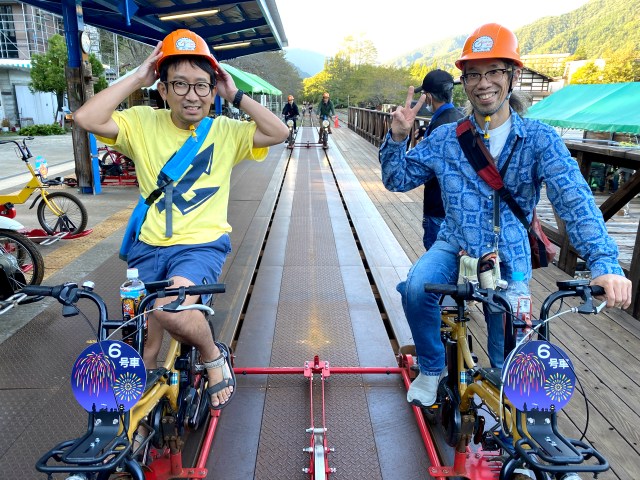
▼ A short video clip of the ride back.
The breeze that you feel while riding the tracks provides a pleasant escape from the heat of the city, and the scenery changes depending on what time of year you visit, with autumn leaves soon to appear and rows of cherry blossom trees in full bloom every year in mid-April. While these are the most popular times to visit, it’s also a cool escape in summer, although if you don’t want to feel the chill like Yoshio did in his shorts and T-shirt, be sure to take a leaf out of Mr Sato’s rule book and dress accordingly.
It’s a rare treat to be able to experience a wonderful activity like this that gives life back to abandoned railway lines, and those who visit it, so be sure to pop this on your itinerary if you’re ever in the area!
Attraction information
Rail Mountain Bike Gattango!! / レールマウンテンバイク ガッタンゴー!!
Address: Gifu-ken, Hida-shi, Kamioka-cho Shinonome 1327-2 (former Okuhida Onsen Station/Machinaka course reception)
岐阜県飛騨市神岡町東雲1327-2(旧奥飛騨温泉駅・まちなかコース受付)
Open: 9:00 a.m.-4:30 p.m. (Late March to late November)
Closed Wednesdays and throughout winter
Website
Photos © SoraNews24
● Want to hear about SoraNews24’s latest articles as soon as they’re published? Follow us on Facebook and Twitter!
Credit:

0 comments:
Post a Comment